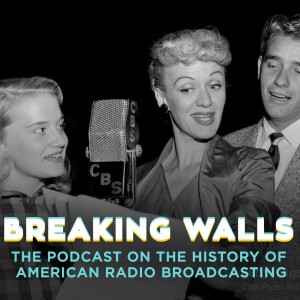
BW - EP146—001: December 1973 With Rod Serling And The Zero Hour—The Big Idea
 2023-11-30
2023-11-30
Download
Right click and do "save link as"
November 1st, 1973. The Waldorf-Astoria Hotel, New York City.
We’re listening in on a press conference hosted by the Mutual Broadcasting System. They’ve purchased the rights to air The Zero Hour from the just-heard Jay M. Kholos. The Zero Hour has thus far been hosted by Rod Serling and directed by Elliott Lewis. It’s Mutual’s first dramatic radio show in nearly twenty years.
As Mutual Broadcasting spent much of the 1950s changing ownership groups, while national advertising was slowly abandoning radio for TV, Mutual ended its last two remaining half-hour dramas, Counterspy and Gangbusters, in November of 1957. Sports and news began to take up the majority of the network’s programming.
Throughout the 1960s more frequent ownership and management changes continued to create network instability, before C. Edward Little was named president in 1972.
During his time as President, Little created the Mutual Black Network, the Mutual Spanish Network, and the Mutual Southwest Network.
Under Little's administration, Mutual became the first commercial broadcasting entity to use satellite technology for program delivery. He also hired Larry King to host an all-night phone-in talk show. King was a one-time announcer for Little at WGMA in Florida. He went on to national fame in both radio and TV, winning a coveted Peabody Award along the way.
But that’s not why we’re eavesdropping in 1973. We’re here for the return of dramatic programming on network radio in the form of The Zero Hour which had been airing in syndication since the fall.
Why is this such a momentous event? How did we get to this point? Tonight, we’ll find out.
____________
The last network big four radio drama, Theater Five, ran on ABC and was launched on August 3rd, 1964.
Unfortunately by the mid 1960s network radio had undergone a transformation. Theater Five’s half-hour time slot only allocated twenty-one minutes for story-time. The other nine minutes went to news, station identification, and local advertising. ABC’s affiliates also had the first right of refusal. In some big markets Theater Five ran on other radio stations.
Two-hundred-fifty-six total episodes were produced before Theater Five was canceled after the July 30th, 1965 episode.
For the next seven years, except for any dramatic vignettes on NBC’s Monitor, NBC, CBS, ABC, and Mutual broadcasting’s network fed programming was relegated to news, sports, talk, and music.
Then in early 1973, an entrepreneurial ad man named Jay M. Kholos had a big idea. He grew up in Southern California around the entertainment and media industry.
Kholos’ idea? He sensed an oncoming nostalgia wave and wanted to relaunch a high-production, serialized audio drama, but updated for the modern sensibilities of 1973.
Kholos needed a hook. He felt by telling one story in five half hours over the course of a contained week, he could keep the listener’s attention and get them to tune back in.
Enter Rod Serling, famed creator of The Twilight Zone. Serling had worked in radio, in Springfield, Marion, Columbus, and Cincinnati, Ohio.
Kholos was soon in touch with Elliott Lewis. By 1973, he had nearly forty years of experience as a writer, director, actor, and producer. Kholos was able to secure the rights to several stories. Now, he needed acting talent.
The goal was to pair name brand film and TV talent with the best Hollywood radio veterans. Howard Duff could have fit into either category. By the 1970s, Duff and Elliott Lewis had been friends for thirty years. They both helped grow the Armed Forces Radio Service during World War II.
Duff was chosen, along with Patty Duke and John Astin to lead the first cast in an adaptation of Bill S. Ballanger’s The Wife of the Red-Haired Man.
Kholos put the program under the umbrella of The Hollywood Radio Theater. They chose Radio Recorders, the largest independent studio in Los Angeles, for the program.
The Zero Hour would debut in late summer.
view more
More Episodes
012345678910111213141516171819
Create your
podcast in
minutes
- Full-featured podcast site
- Unlimited storage and bandwidth
- Comprehensive podcast stats
- Distribute to Apple Podcasts, Spotify, and more
- Make money with your podcast
It is Free
- Privacy Policy
- Cookie Policy
- Terms of Use
- Consent Preferences
- Copyright © 2015-2024 Podbean.com






